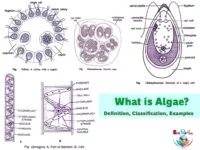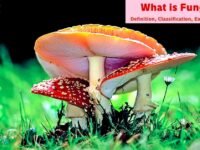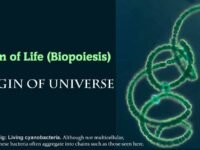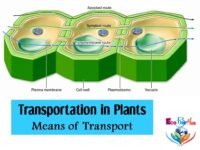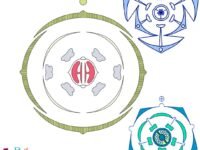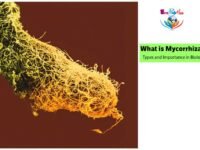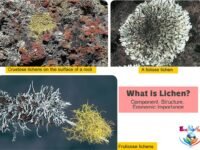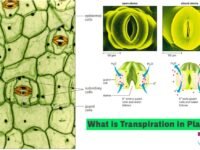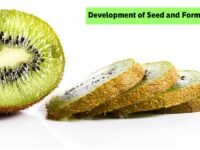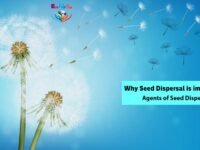In this tutorial, we have discussed ‘What is Life?‘ along with ‘Definition & Characteristics of Life’.
► Read More: Origin of Life (Biopoiesis) and Origin of Universe ► Read More: Role of Microbes in Human Welfare ► Read More: Example of Biofertilizers, Organic & Chemical Fertilizers ► Read More: Biological Classification || Five Kingdom of Classification
TABLE OF CONTENTS
WHAT IS LIFE?
Life is a unique, complex organization of molecules that expresses itself through chemical reactions which lead to growth, development, responsiveness, adaptation, and reproduction. The objects exhibiting growth, development, responsiveness, and other characteristics of life are designated as living beings.
They have their own specific form and structure. Based on these characteristics, the living objects can be recognized as trees, shrubs, cattle, birds, fungi, bacteria, etc. However, a specific shape, size, or structure is also present in many non-living objects such as brick or rock. No single trait of life can distinguish a living being from a nonliving object. Therefore, a number of traits are examined simultaneously to differentiate living beings.
CHARACTERISTICS OF LIFE
01. Cellular Structure
Each living being is a complex entity that is formed of one or more cells—complex, organized assemblages of molecules enclosed within membranes. The cells are made of protoplasm, popularly called living matter. The composition of living matter is known. However, we have not yet been able to create protoplasm because of the lack of organization of biomolecules. Protoplasm and cellular structure are absent in viruses.
02. Organization
A living being has an organization, that is, the living being consists of several components and subcomponents which cooperate with one another for the well being of the whole organism. A living being has multiple level organizations. Each level of organization has its own properties which are not found in its constituents.
A cellular organelle develops a property not found in its interacting molecular components. A living cell has its own characteristics not found in its organelles. A tissue is able to have a trait not found in its constituent cells.
03. Energy
Living beings constantly require energy not only to perform various activities of the body but also to overcome entropy or a tendency to randomness. The source of energy is food. It is required by every cell of the body.
04. Homeostasis (Homoeostasis)
A favourable internal environment suitable for the functioning of body organs is present in every living being. It is quite different from the external environment. Changes in the external environment do not have much impact on the internal environment as the living beings have a self-regulated system to adjust and maintain the internal environment. The phenomenon is called homeostasis
05. Metabolism
All organisms whether unicellular, multicellular, plants, animals, fungi, or microbes operate a network of thousands of chemical reactions. The sum total of all chemical reactions occurring in an organism due to specific interactions amongst different types of molecules within the interior of cells is called metabolism (Gk, metabole— change).
Metabolism involves the transformation of matter and energy within an organism and their exchange with the environment. All activities of an organism including growth, movements, development, responsiveness, reproduction, etc. are due to metabolism. No nonliving object shows metabolism. However, metabolic reactions can be carried out outside the body of an organism in cell free systems. Such reactions are neither living nor nonliving. The isolated in vitro metabolic actions can, however, be called biological reactions or living reactions as they involve biochemicals.
■ Types: Metabolism is of two kinds: catabolism and anabolism.
➢ Anabolism Definition: Anabolism includes all the “building up” reactions. It is also called constructive metabolism since it involves the synthesis of complex substances from simpler ones, e.g., synthesis of organic compounds from CO2 and H2O during photosynthesis, formation of starch from glucose, production of proteins from amino acids, formation of lipids from fatty acids and alcohols. Energy is stored (as potential energy) in the process.
➢ Catabolism Definition: Catabolism (= katabolism) constitutes “breakdown reactions”. It is also known as destructive metabolism because it involves the breaking of complex substances into simpler ones, Potential energy present in the complex substances is converted into kinetic energy. Respiration is an example of catabolism. It releases energy for performing different body activities.
■ Differences between Anabolism and Catabolism
Sl No.
Anabolism
Catabolism
01
It is the sum total of building up or constructive processes.
Catabolism is the sum total of breakdown or destructive processes.
02.
Anabolism produces complex materials from simpler ones.
It forms simple substances from complex ones.
03.
It stores energy.
It releases energy.
04.
Kinetic energy is changed into potential energy.
Potential energy is changed into kinetic energy.
05.
Anabolism is required for growth, maintenance, and storage.
Catabolism is required for performing various activities of living beings.
06.
Fewer types of precursors form diverse products (reactions diverge).
Many types of larger substances break down to form fewer types of simple molecules (reactions converge).
06. Growth
Growth is an irreversible increase in mass of an individual. A multicellular organism increases its mass by cell division. In plants, growth continues throughout life as they have meristematic areas where cell divisions occur regularly. In animals, growth occurs to a certain age after which cells divide only to replace worn out and lost cells. Unicellular organisms also grow by cell division. However, cell division is also a means of reproduction in them. In higher animals and plants, growth and reproduction are mutually exclusive.
Living organisms show internal growth due to the addition of materials and the formation of cells inside the body. Such a method is called intussusception (L. intus — within, suscipere — to receive). A dead organism does not grow. However, some nonliving articles can increase in size, e.g., mountains, boulders, crystals, stones. It is due to the addition of similar materials to their outer surface. The process is called accretion (L. accrescere — to increase).
In living beings growth producing substances are of two types, protoplasmic and apoplasmic. Protoplasmic substances are components of living matter like cytoplasm and nucleus. Apoplasmic substances (Gk, apo — away, plastos —formed) are nonlíving materials formed by the cells which become components of tissues, e.g., cell wall, fibers of connective tissue, matrix of bone and cartilage. For growth to occur, three processes are involved – cell division, cell enlargement and secretion of apoplasmic substances. All the three can be studied during development of embryo from zygote.
Chemically growth is a result of the difference between anabolism and catabolism. Growth occurs when anabolism exceeds catabolism. There will be no growth if anabolism and catabolism are equal. Degrowth or negative growth can occur when catabolism exceeds anabolism.
07. Consciousness
It is awareness of the surroundings and responding to external stimuli. The external stimuli can be physical, chemical or biological. The stimuli are perceived by sense organs in higher animals, e.g., eyes, ears, nose. Plants do not possess such sophisticated sense organs. However, they do respond to external factors such as light, water, temperature, pollutants, other organisms, etc.
Photoperiods (duration of daily exposure to light) influence reproduction in those animals and plants which breed during a particular season (seasonal breeders).
All organisms, from primitive prokaryotes to the most advanced and complex eukaryotes, are able to sense and respond to environmental factors. Organisms also handle chemicals entering their bodies. Human beings have an additional faculty of self consciousness (awareness of self) or Jiva bhava (of Vedas). Old Indian scriptures have quantified Chetan tatwa or consciousness in the units called Kalas. Plants (Udbhija) are believed to have one kala, small animals (Svedaja) two, oviparous animals (Andaja) three while viviparous animals (Jarauja) have four kalas. Humans have five or more than five kalas, some even 16 kalas. Consciousness is said to be the defining property of living organisms.
If a patient is lying in a coma and is supported by machines for various functions, self consciousness and consciousness to the external environment are supposed to be absent. Some of these patients never come back to normal life. They can neither be called living nor nonliving or dead.
08. Healing and Repair
Living beings can repair and heal the broken and injured parts.
09. Disposal of Wastes
Wastes generated by living beings are regularly disposed off.
10. Movements
Living beings show movements of their parts. Some are able to move from place to place. The phenomenon is called locomotion. Most plants and even some animals do not move about, while numerous nonliving objects, such as clouds, do move. The criterion of movement is thus neither necessary (possessed by all life) nor sufficient (possessed only by life).
11. Variations
Living beings possess variations and have the ability to evolve with time.
12. Adaptations (L. ad – toward, apt – adjust)
Useful inheritable variations or changes in form, function, and behaviour which help an organism to adjust well and successfully in its environment are called adaptations.
An organism is considered best adapted to an environment when it possesses inherited traits that enhance its survival and ability to reproduce in that environment. Adaptations allow the organisms to overcome seasonal and other changes in the environment. They are of two types, short term and long term.
13. Reproduction
It is the formation of new individuals of a similar kind — life arises from pre-existing life. Reproduction is not essential for the survival of individuals. It is required for the perpetuation of a population. The ability for reproduction develops when a young individual becomes mature. Reproduction is of two types: asexual
Asexual reproduction is the formation of new individuals from specialized or unspecialized parts of a single parent without the formation and fusion of gametes. It occurs by spores in fungi, algae, and some lower animals. Fission and multiple fission are methods of normal asexual reproduction in most unicellular organisms. Fragmentation or breaking into parts with each fragment growing into a complete organism occurs in fungi, algae, and protonema of mosses. A related process is the regeneration of lost parts so that a single individual can form two or more individuals, e.g., Planaria (a flatworm), Hydra (a coelenterate). Budding is a method of asexual reproduction in yeast (a fungus) and Hydra.
Sexual reproduction involves the formation and fusion of two types of sex cells or gametes. They fuse to form a zygote. Zygote gives rise to offspring.
In unicellular organisms, growth and reproduction are synonyms. Many organisms do not reproduce, e.g., mules, sterile worker bees, infertile human couples. Therefore, reproduction is not an all inclusive characteristic of a living organism. However, no nonliving object has the power to reproduce or replicate.
14. Life Span
Every living organism has a definite life span of birth, growth, maturity, senescence, and death.
15. Death
The stoppage of various life activities by an organism accompanied by an increase in entropy is called death. Death occurs due to aging, disease, accident and predation. Aging normally occurs in all organisms after a period of reproductive maturity, It is, however, absent in those cases where the organism multiplies by binary fission, e.g., Amoeba, bacteria. A fully grown Amoeba or a bacterium divides into two daughters. In the process, it loses its independent existence. Here, natural death is absent and the organism is immortal. However, ciliates which also multiply by binary fission are known to show signs of aging or senescence after a few divisions. They have natural death like other organisms.
Living organisms are, therefore, self replicating, evolving, and self regulatory interactive systems capable of responding to external stimuli, sharing a common genetic material to a varying degree both horizontally and vertically.


